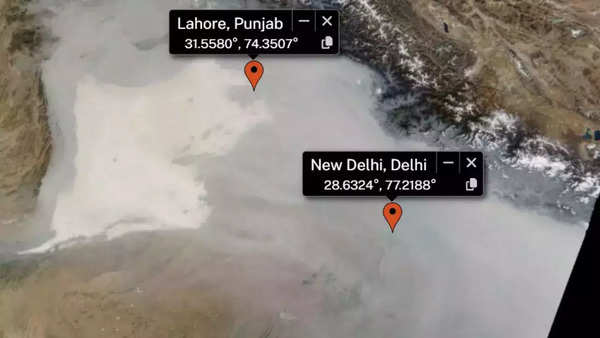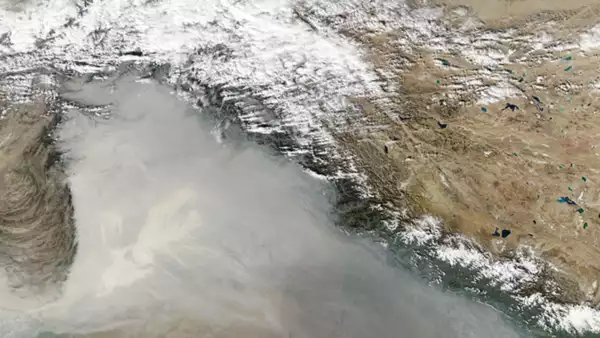
Lahore, the area with over 14 million persons surrounded by business companies, has hit report pollution rates this month. More than 15, 000 instances of lung and viral infections were reported in a single day, according to Ary News, which is a report released on Thursday.
Lahore’s pollutants catalog, according to European company IQAir, was staggering at 1165, while New Delhi and its environs were only around 350.
Facilities in Lahore are experiencing an influx of people presenting signs including dry cough, breathing problems, asthma, and chest infection.

The primary state medical facilities have recorded significant individual figures: Mayo Hospital attended to over 4, 000 people, Jinnah Hospital treated 3, 500 individuals, Gangaram Hospital received 3, 000 cases, and Children’s Hospital managed more than 2, 000 patients.
Surge in numerous problems in Pakistan
Ary News reported that Pakistani medical practitioners have highlighted the increased chance for children and people who have underlying conditions like bronchitis and respiratory problems.
The atmospheric waste has triggered a surge in several ailments, including asthma, neck infections, and dermatological problems.
The World Health Organization ( WHO ) warns that air pollution can lead to strokes, heart disease, lung cancer, and respiratory issues. Kids, babies, and the elderly are particularly susceptible to these health hazards.
PM2.5, the great particulate matter that poses the greatest risk, is the main pollution in Lahore’s atmosphere. It originates from fossil fuel combustion, dirt storms, and wildfires, and has been linked to pneumonia, heart and lung disease, cancer, and mental damage in children.
complete strategies to address the problem
The Pakistani government is taking extensive steps to address the country’s economic problems. The Punjab Provincial Disaster Management Authority of Pakistan formally declared dust a” disaster” and put emergency procedures into effect, according to Pakistani media sources.
The pollution, generally caused by professional emissions, auto exhaust, and agricultural grass losing, has triggered health emergencies. As a result, colleges have been closed, outdoors activities banned, and major health concerns are mounting. The harmful atmosphere poses serious risks, especially to youngsters, the elder, and those with respiratory problems.
Even read: Pakistan restricts outdoor pursuits, business hours to suppress air pollution-related condition
In addition to a three-month ban on wedding celebrations, the province’s transportation division has new regulations to fight haze. Also, the Pakistan Punjab leadership has suspended educational pursuits in schools and colleges.
In Multan, located about 350 miles from Lahore, the AQI reached an even more disturbing 2, 000. In response, authorities have banned entry to gardens, parks, and other common areas, along with polluting tuk-tuks and restaurants using raw grills.
Heavy blanket of sky-soiling haze

NASA’s Moderate Resolution Imaging Spectroradiometer ( MODIS ) has been used to document the extensive smog that covers northern Pakistan.
” A thick cover of sky-soiling dust hung over northern Pakistan in early November 2024, causing heat superior to fall, schools to close, and sending hundreds of people to the hospital”, NASA MODIS said.
The Punjab authorities website advised on November 12 that the province’s AQI had soared by 604-well over the Toxic range over the course of the previous 24 hours.
The yellow haze, according to NASA MODIS, “is so heavy that it entirely obscures the scenery of Pakistan from view.” The cloud hugs the ground beneath the haze, as evidenced by random lighter-colored patches. Near the northern edge of the fog is the capital of Lahore, Pakistan, which has recently been ranked as the most poisoned city in the world.



